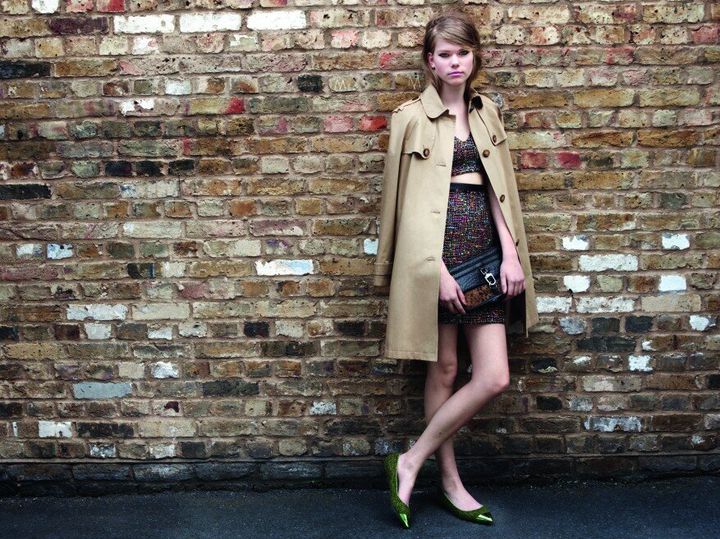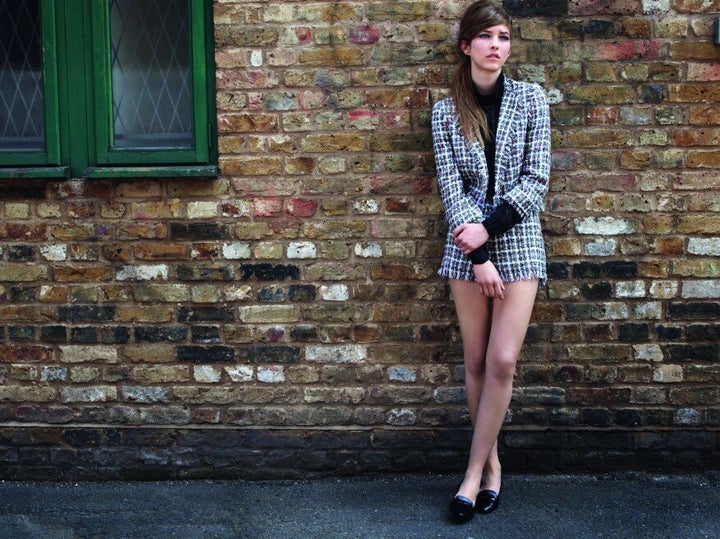Audrey, Twiggy, Brigitte; iconic names from an iconic era. Representing pinpoint precise eye makeup, the new definition of supermodel and the ever elegant beehive, these three ladies played an extraordinary part in defining the way we view the 60s as an era. From mod tartan to the refined A-line dresses and super mini skirts brought about by Mary Quant, to the beginning of a colour revolution that burst onto the scene by the end of the decade, the 60s changed the way fashion looked and felt from that point on.
Wherever your sensibilities lie, there is an element of newness to be captured from the sartorial choices put in position by those living and working at the time. Much of the fast fashion displayed daily on the high street has clear 60s derivatives even if the concept is the only giveaway.
Even with the rise and rise of the midi skirt, the mini has more than its fair share of attention both on and off the high street. Topshop's infamous black panelled body con skirt began a fresh revolution of super short offerings, spilling into nightclubs and sixth form colleges across the country. While there is no doubt that midi is the in choice this season and will remain that way, the high street still sports an unearthly amount of mini skirts that appear to shrink in length year on year. From leather (read awkward to sit in), to boucle, perfect for a little 60s magic, the mini skirt shows no sign of hiding in the back of the closet.

Fashion is undeniably cyclical; the peplum is experiencing a third decade following Christian Dior's 'New Look' and Lady Diana Spencer's later patronisation and 90s fashion is now 'vintage' enough for wear outside the gym. Some incarnation of the 60s era in style is re-released into the public domain seemingly more frequently than any other fad. Two years ago, Louis Vuitton famously celebrated the finest of Marilyn Monroe style, catering for the 50s loving audience to much applaud, as the longer lengths spread through the high street too. "But why the 60s?", I hear you cry. Put simply, it represents change. Young people might pretend not to like change, but we do. We like inciting it and enacting it; the idea that one woman by the name of Mary Quant singlehandedly changed the whole perspective of fashion for women is spectacular.
In order to quantify the 'real' sixties, one must define one's expectations and pre-conceptions. My dainty fantasy goes something like this: Twiggy stands on top of a fireplace surrounded by a posse of Diana Vreeland, David Bailey and Jackie Kennedy. Brigitte Bardot sits nearby brushing her hair into a beehive and Jean Shrimpton is in the next room put out at not being invited to the party, clutching a teddy bear. In all of this, Mary Quant is standing by with a midi skirt, some scissors and a sewing machine ready to revolutionise women and their skirts. So clearly, I'm a little biased towards the creative set, and what is, in my mind, my perception of a more refined, 50s follow on era. In my mind that encapsulates the whole decade. But alas, a real revolution was simultaneously underway, a revolution peppered with tartan trousers and bomber jackets.
The clogs of a creative rebellion that lead to the onset of the tartan army begun to turn at the end of WW2 and built to a winkle-picking climax in the late 50s-mid 60s. Mary Quant's minis were far from the minds of these women who heartily broke away from Bardot's beehives to join a new set. The slightly less safe, grittier and more 'out there' look can be a risky venture; tartan isn't for everyone, nor does it suit, but polite nods to the trend can be easily managed.

In another reincarnation of The Swinging 60s, Topshop has released their new line for Autumn, 'Factory Girl'. The collection combines elements of our three most popular visions: mods, 60s elegance and the New York effect, that of Edie Sedgwick. With a higher level of homage to Andy Warhol's muse, the collection is named after the best-selling film starring Sienna Miller as the dazed and confused icon. The collection presents an exquisite trench, the classic perfect investment piece alongside loose knits that complement fitted cropped trousers in a exotic tartans and simple courts for that laid-back 60s style. A simple update of the skinny jean turns an ordinary outfit into the perfect Swinging 60s ensemble, with just enough of a mod-nod. The leather skirt has been rejuvenated, this time quilted and the right modest length to make wearable, and not too tight.

Pairing light tweedy patterns with chain link wool and matching two piece trouser and jumper sets, the collection hits the nail on the head. While some may be sceptical at the thought of yet another 60s collection from no less than the high street mogul, the collection pulls together a spread of the decade. From micro mini fray edge shorts to 3/4 length tartan mix jeans enough to complete even a slight mod leaning, it's all there. An all in one grey number, actually a trouser and jacket set matches the power trouser trend, hitting it right on the head with mod-like appeal. Towards the end of the collection the glamour reappears with a series of mini-dresses and stilettos for perfect Audrey enjoyment. Ticking the oversized trend so widely seen on the catwalk are the boyfriend coats juxtaposing short lengths with expanding widths for the endless Carnaby Street look.

As autumn sweeps through the nation, the high street in its wider form is sure to be pick up the 60s as its fall back collection. In the patriotic year to end all years, it is fitting that we, the country whose fashion defined worldwide trends, should be celebrated once more.
All images courtesy of Topshop
